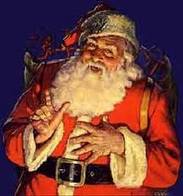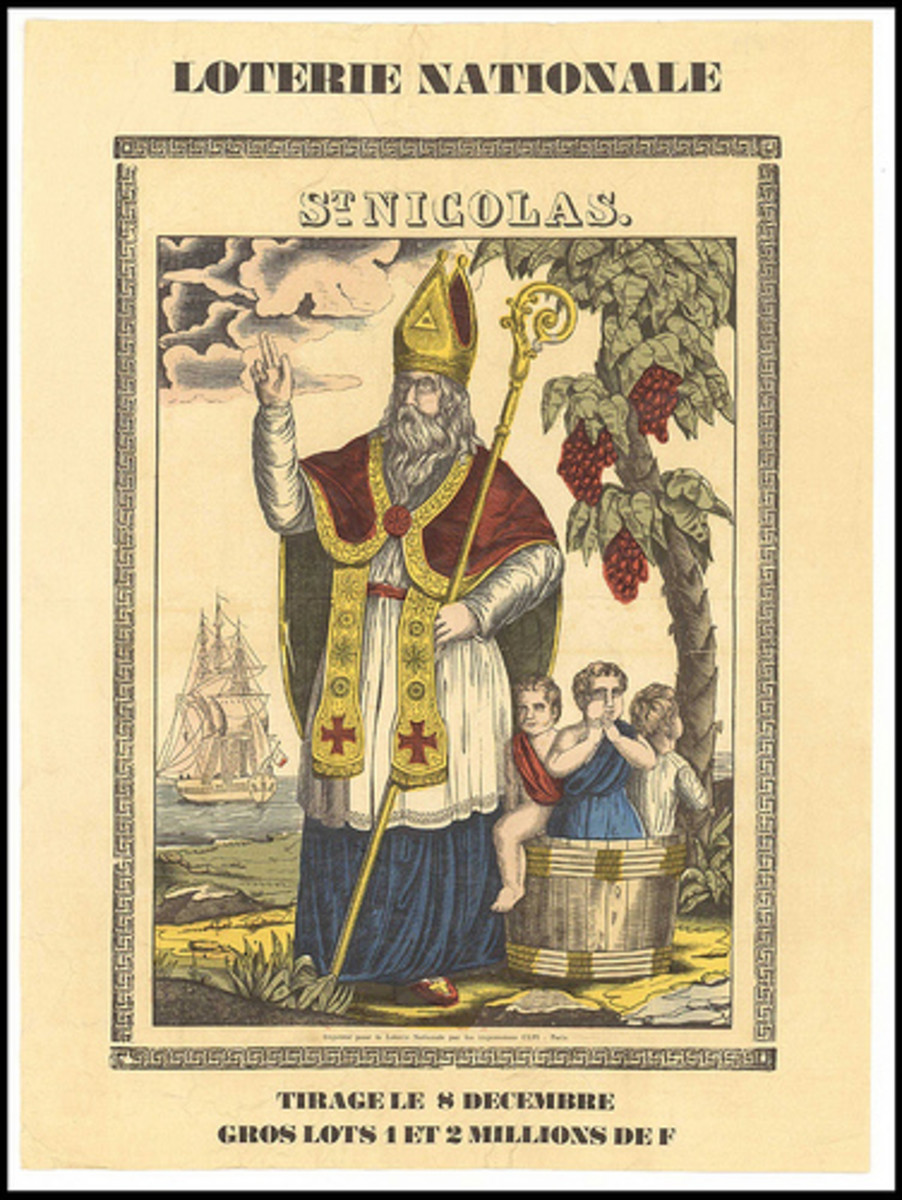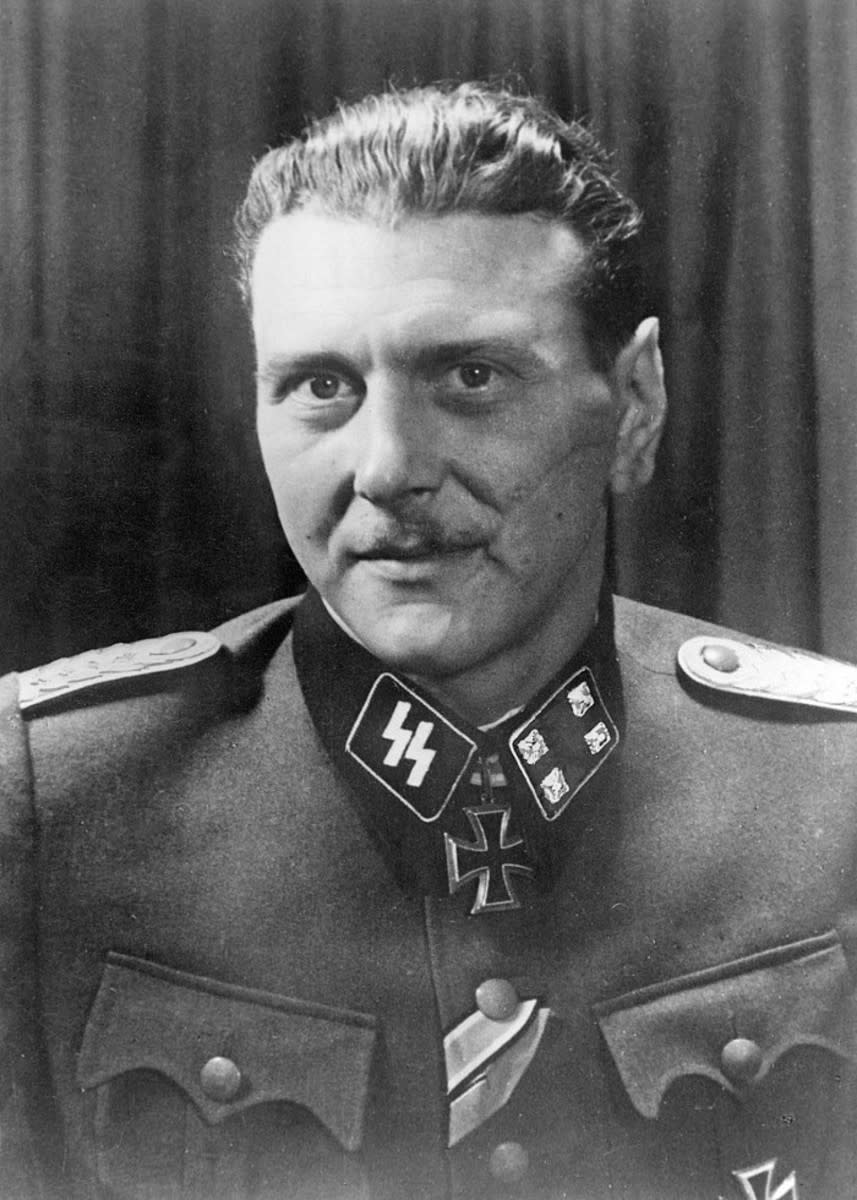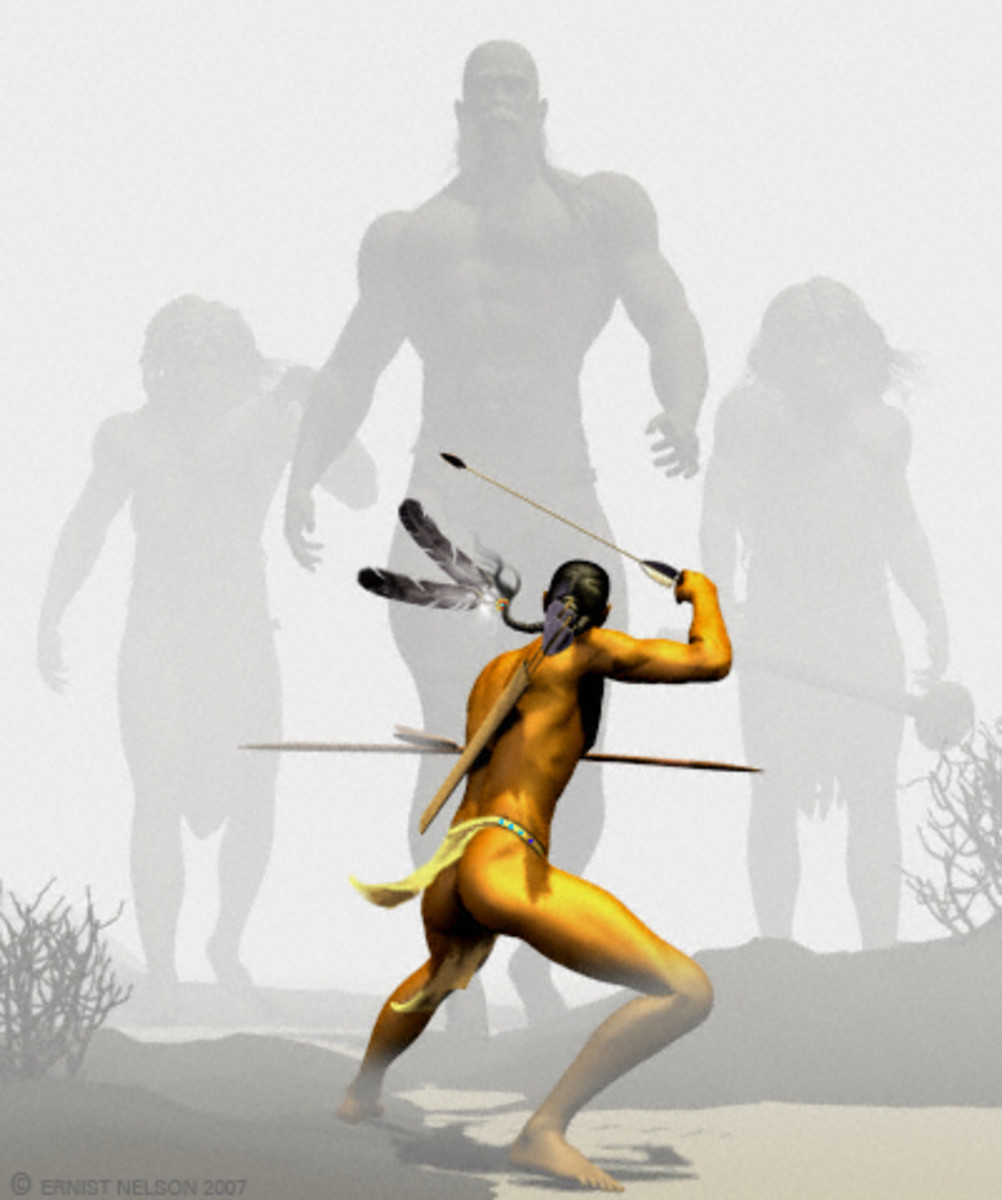The Real Story Behind SANTA CLAUS
Ho ho ho...Here Comes Santa Claus

The Real History of Santa Claus
Where did the legend of Santa Claus come from? How did it start? Lets look at the real story behind the myth, beginning with a very real man named Nicholas.
The legend began in fourth century Myra in Asia Minor, which today is known as Turkey. Nicholas was a Bishop who was known for his generosity and kindness to children. At least one miracle was attributed to him by the Catholic Church. The most famous story about him is the following...
A father had three daughters. They were so poor, they were likely to lose their home. The three young daughters had decided to turn to prostitution to save their father from financial ruin and retain their home. When Bishop Nicholas found out, he visited their house and left three stocking, each with a piece of gold within. The three gold pieces saved the family from ruin (And also started the tradition of hanging Christmas stockings and putting gifts in them.)
Later, Bishop Nicholas got into trouble with Emperor Diocletian for saying things which the Emperor preferred were not said. Nicholas didn't approve of many thing which occurred under the Emperor and said so. He was exiled from Myra. Nicholas wandered Europe for a time and his reputation had proceeded him. He was well received everywhere as a man of integrity and courage. The Pope himself praised Nicholas.
Eventually Bishop Nicholas returned to Myra and was quickly arrested. He ultimately died in prison on Dec. 6, 350 AD. Many mourned his death and so decided to honor his life annually. Sailors, migrants and various travellers carried the tale of Bishop Nicholas throughout Europe. His deeds were honored every Dec. 6th in many countries. The Church eventually made him St. Nicholas.
In 1686, Josiah King wrote "The Examination and Trial of Father Christmas" to celebrate Christmas being reinstated as an official holiday. Father Christmas embodied the spirit of good will and joy that Christmas is supposed to represent. Father Christmas was depicted as an old man with a white beard. This could be because he typified the antiquity of the Christian tradition. Another theory is that he was based on Woton (Or Odin) the All-Father of Scandinavian/Dutch/Germanic mythology. Father Christmas did not bring gifts to children, at this point. He was implicitly immortal, as eternal as Christmas itself.
Father Christmas became a symbol of Christmas over the next 100 years. And since the life of St. Nicholas was also celebrated every December, the two legends somehow began to merge. People began to think of them as one character and so St. Nicholas became Father Christmas.
In the 1700, many Dutch speaking people began to settle in America. They brought with them the legends of St. Nicholas/Father Christmas. They called him Sint Nikolaas, but the name got shortened and altered by American writer Washington Irving who wrote the first popular stories about the Sint Nikolass, who Irving renamed "Sinterklaus". Americans, hearing this legend for the first time, adopted the story into American culture but they had trouble pronouncing Sinterklaus and so they changed the name to make it easier to say. Saint Nicholas/Father Christmas became Santa Claus in America. Although the name Father Christmas would eventually fade from popular use in America, Santa Claus would not.
In Austria, he became known as 'Christkind', the spirit of Christ's generosity. He had other names around the world but few of them are used any longer. When Austrians brought Christkind to America, the name was secularized and became Kris Kringle.
Different aspects of the combined legend were represented in Santa Claus. Santa brought toys to kids and was an immortal being who symbolized Christmas. His appearance was rather vague at this point and different groups pictured him different ways. But the one definite, consistent element was the white beard.
Santa/Kris Kringle was sometimes described as a jolly elf, because the Santa legend got mixed with another myth which talks of a magic Elf who comes to your home to deliver gifts. The elfin image that was popularized by Clement Clark Moore's classic 1823 poem, "A Visit From St. Nick". (Moore also invented the idea of the flying Reindeer.) This elfin image was the prevailing view of Santa for a long time.
In 1881, Harper's Weekly cartoonist Thomas Nast made some famous illustrations of Santa which depicted the jolly fellow as a chubby fellow. He was drawn with a big belly. The text that accompanied the Nast cartoons suggested that Santa and his magic Reindeer lived in the North Pole. Nast also designed his trademark red suit. Up until this point, Santa Claus had usually been drawn as wearing Bishop Robes.
But the definitive, iconic image of Santa Claus as we know him today was created by Coca-Cola. In 1931, Coke began a massive publicity campaign using Santa Claus as their gimmick. The ads showed a smiling Santa holding a Coca Cola in his hand. This interpretation of Santa was a rather large man, tall and tubby, with a bushy white beard. He had a bright red outfit lined with white fur.
Many Santa actors were hired by Coke for personal appearances. Department store Santas started to appear at this time and they adopted the tall, plus-sized version of St Nick. Taller Santas were easier to find than little people. However, they did cast dwarfs and midgets as Santa's Elf helpers. (Beginning the legend that Elves made Santa toys.)
This over-sized rendition of Santa was adopted by Macy's who used the large Santa as the anchor of their annual parade. The 1947 film "A Miracle on 34th Street" finally cemented this image.
The name Father Christmas never really caught on in America but the names Santa Claus/Kris Kringle/St. Nicholas are all still well known and used today. The figure of Santa Claus has appeared in every possible medium of entertainment and literature. He is forevermore established as a large, portly, ageless man in a red costume who lives in the North Pole and brings toys (built by Elves) to children on his flying reindeer and sleigh.






